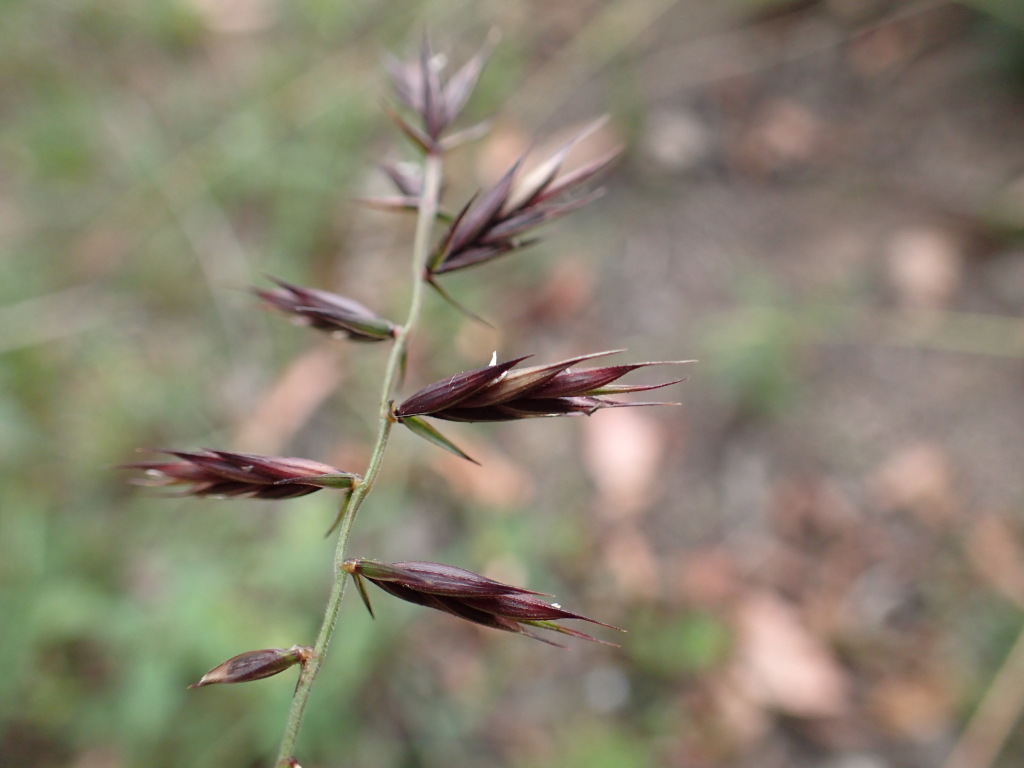Australopyrum retrofractum
(Vickery) A.Löve Comb Wheat-grassSlender, tufted or shortly rhizomatous perennial. Culms mostly glabrous, shortly pubescent for 1–3 cm below the inflorescence, erect, to 1.2 m high. Leaves glabrous to sparsely hairy; blades erect, flat, 6–15 long and 1–5 mm wide; sheath smooth and shining; ligule truncate, less than 0.5 mm long; auricles pointed, encircling stem, sometimes overlapping. Inflorescence compact to rather sparse, 2–10 cm long, of 4–18 spikelets, the rachis flattened, covered with short antrorse or retrorse hairs. Spikelets 4–9-flowered, rigid, 7–18 mm long, soon disarticulating; glumes subequal, 6–8 mm long, narrowly tapered to an awn-like apex, indistinctly 3–7-nerved, virtually smooth, widely gaping or reflexed at maturity; lemma broader, slightly longer and firmer than glumes, indistinctly nerved, scabrous along dorsal angle; palea about equal to body of lemma. Flowers Sep.–Nov.
EGL, EGU, HSF, HNF, MonT, HFE, VAlp. Also NSW. Introduced into New Zealand. Confined to a few rocky, usually elevated sites in rain shadow areas mostly of the Snowy River and its tributaries (e.g. Buchan and Murrindal Rivers), with an outliers near Nowa Nowa and Mt Tingaringy.
In Vickery's (1951) original circumscription of A. retrofractum the hairs along the rachis of the spike are given as being strictly retrorse. In very few specimens does this seem to be the case; both antrorse and retrorse hairs are generally present. Reliance upon this character appears to have caused confusion in the application of the name A. retrofractum and its distinction from the Tasmanian A. pectinatum (e.g. Willis 1970), whereas reference to other characters, in particular the culm which is pubescent to the base, and lemma which is long-awned and scabrous-pubescent in the Tasmanian species, readily permit these species to be distinguished.
Walsh, N.G. (1994). Poaceae. In: Walsh, N.G.; Entwisle, T.J., Flora of Victoria Vol. 2, Ferns and Allied Plants, Conifers and Monocotyledons, pp. 356–627. Inkata Press, Melbourne.
 Spinning
Spinning


